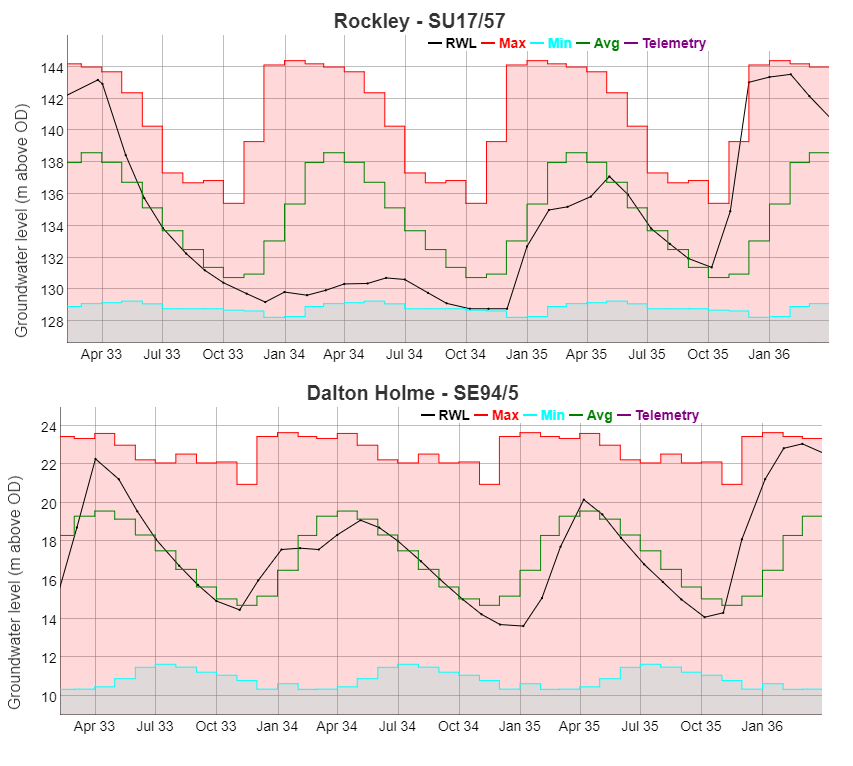Jump to: |
|
 |
 |












 |
Severe and extreme drought began for SSI-12 in winter 1933 in Scotland and Northern Ireland, with 1934 in extreme drought across much of the country. The east of Scotland, northern England and northern parts of East Anglia appear to be less affected, although still show at least mild flow deficits. The most severe low flows across the country occur for the duration of 1934, and in some southerly catchments extend into the start of 1935. Severe and extreme drought for SSI-3 began at the end of winter to spring 1932 across the country before a period of mostly above normal flows through much of 1932 and spring 1933. As for SSI-12, SSI-3 severe and extreme low flows occurred first in Scotland and Northern Ireland in autumn 1933 before the south-east in the winter. North-eastern regions (Eastern Scotland and North East England), although experiencing individual months of extreme conditions, appear to have been less affected than other regions. Low flows ended in the majority of catchments in spring 1934 but continued until the autumn in the south-east of England. The median rank of the 1932-1935 event is within the top 10 events for all event characteristics for SSI-12, and for both SSI-12 and SSI-3 accumulated deficit it is the only event where the box falls entirely within the top 10 ranking. |
 |
The groundwater effects of the drought were experienced in the Chalk of southern and south-east England in 1934 following the winter of 1933-34 where there was very limited recharge. No significant effects were seen in the Chalk of Yorkshire, e.g. at Dalton Holme. |
Click images to enlarge
 |